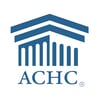By Lori A. DeVito, RPh., HDDP, Compounding Pharmacy Specialist, PCAB Surveyor
Common deficiencies frequently found on PCAB surveys are related to cleaning and disinfecting procedures—specifically, the effective use of products used to complete these procedures. During a survey, the Surveyor confirms whether product label instructions are being followed properly, including the dwell time of each product.
The dwell time is the contact time the product is required to remain on the surface to effectively kill bacteria and germs. Since products differ, they may have various dwell times. Manufacturers undergo strict third-party lab testing and based on the specific product being tested, products may have different target pathogens. Dwell times and kill claims can be found on the product label.
There are several PCAB standards which address cleaning. Here are a few examples of applicable standards:
Standard TCRX3-C: Pharmacy personnel are trained to operate, clean, maintain, and calibrate compounding equipment.
Standard TCRX6-O: Written policies and procedures are established and implemented for cleaning, disinfecting and monitoring the controlled air environment(s).
Standard TCRX6-E: Written policies and procedures are established and implemented by the Pharmacy relating to the appropriate use, calibration, cleaning and, as appropriate, disinfection or sterilization of equipment used for preparing, dispensing, labeling, and shipping of preparations.
Not only will the Surveyor be sure the appropriate product is used, but also that it is used correctly. This includes following the required dwell time. Just spraying on a product doesn’t ensure that it works. You must follow the manufacturer’s guidelines on how to use the product or have specific data validating your process.
Consider the following process:
1. Choose the correct product for the task.
- Cleaning agent: An agent used to the removal of residues from surfaces (dirt, debris, microbes, and residual chemicals/drugs)
- Disinfectant: A chemical or physical agent used on inanimate surfaces and objects to destroy fungi, viruses, and bacteria
- One-step disinfectant cleaner: A product with an EPA-registered (or equivalent) claim that it can clean and disinfect a non-porous surface in the presence of light to moderate organic soiling without a separate cleaning step
- Sporicidal Agent: A chemical or physical agent that destroys all bacterial and fungal spores when used in sufficient concentration for a specified contact time
2. Read the directions for use and be sure the SOP is consistent with the manufacturer’s instructions or data which supports an alternate procedure.
3. Train the staff. Document the training, including knowledge of dwell time.
4. Have staff provide competency via didactic or “hands-on” methods. Document competency.
The bottom line: Don’t be in a hurry or cut corners when cleaning. Any time a product is used, read the label and follow the specific instructions.


